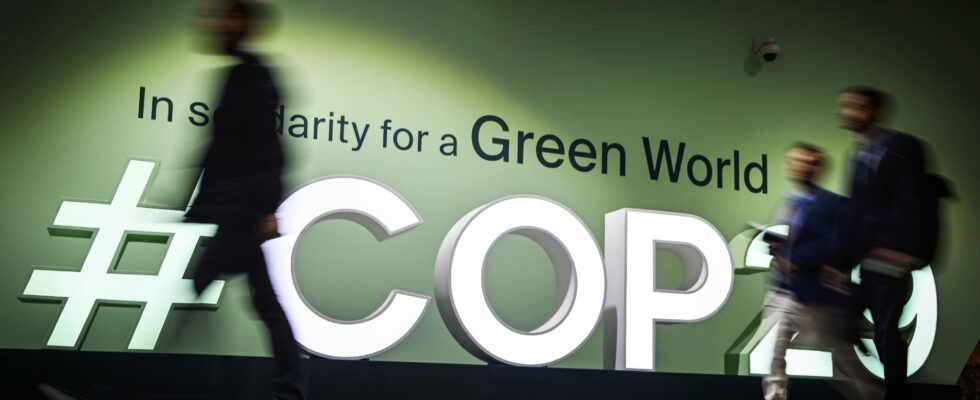The subject is poisoning discussions between States during COP29: who should pay more for the climate? After endless negotiations, and two years of delay in its application, funding of 100 billion dollars per year from industrialized countries finally saw the light of day. But the real needs – particularly to help the poorest countries which are also the most exposed to climate change – are much higher. We would have to raise at least 1,000 billion dollars per year to be in the lead. Who will pay the bill?
Industrialized countries, which are obliged to devote part of their resources to climate issues under Article 9.2 of the Paris Agreement, are calling for an expansion of the list of contributors, as well as greater involvement of the private sector . Their argument? The world has changed since the United Nations Framework Convention (UNFCCC) established in 1992, which serves as a guide for action against global warming. Today, some of the developing countries, notably China, Brazil and Saudi Arabia, have a much higher GDP. They are also major emitters of greenhouse gases. However, these nations are, for the moment, exempt from any obligatory contribution.
Bad faith on both sides
Emerging countries, for their part, do not want to negotiate. They point out that they are not at the origin of most of the historical broadcasts. And that the Paris agreement is clear: they can provide aid on a voluntary basis, but it is the industrialized countries that must serve as the driving force for financing.
The two reasonings are valid. Except that both camps are showing bad faith. In recent years, several scientific studies have tried to establish what the ideal list of contributing countries could be. The results, although different, all point in the same direction: a rebalancing is necessary, both in terms of the amounts to be paid and in terms of the inventory of the nations concerned. Several studies suggest, for example, that hydrocarbon producers such as the United Arab Emirates, Qatar and Kuwait, and small high-income countries, such as Israel, South Korea and Singapore, should contribute to financing the fight against climate change.
According to the calculator established by the World Resources Institute, a think tank based in Washington, the United States should represent 42% of financing for climate actions because it is responsible for 20% of historic emissions and national wealth is there. high. But they are far from playing this role. They might never even get there. Behind the scenes, many experts deplore the reluctance of the world’s largest economy to open the purse strings when it comes to climate. “The Republicans are not the only ones to blame. Even Barack Obama did not keep his promises,” underlines one observer.
China’s double game
For its part, China is also playing a double game. Of course, it finances green or low-carbon technologies in many countries. But its goal is more to prosper and establish its economic domination than to save the planet. Still according to the World Resources Institute, China has already spent 45 billion euros on “climate financing” between 2013 and 2022 in developing countries. And this is only the beginning, as it occupies a dominant position in the segments most useful to the transition. This South-South cooperation is currently beyond UN accounting. This undoubtedly suits Beijing, which thus avoids the obligation to demonstrate more transparency with regard to its investments.
How to get out of this situation? The extent of the tensions calls for a last minute compromise, like what happened last year. And undoubtedly the creation of a new category of less restrictive financing to take into account South-South flows. Perhaps the most vulnerable countries will be able to extract better conditions from the States which finance them? According to the latest available data, 69% of aid remains in the form of loans with interest rates, compared to 28% for donations and grants – another area of contention between North and South. The final result will undoubtedly not be up to the challenges. The sums mobilized are currently unlikely to come close to the threshold of 1,000 billion dollars per year. The scientists, however, are clear. The longer help takes, the higher the final bill will be. The argument, economic and not ecological, will end up hitting the mark.
